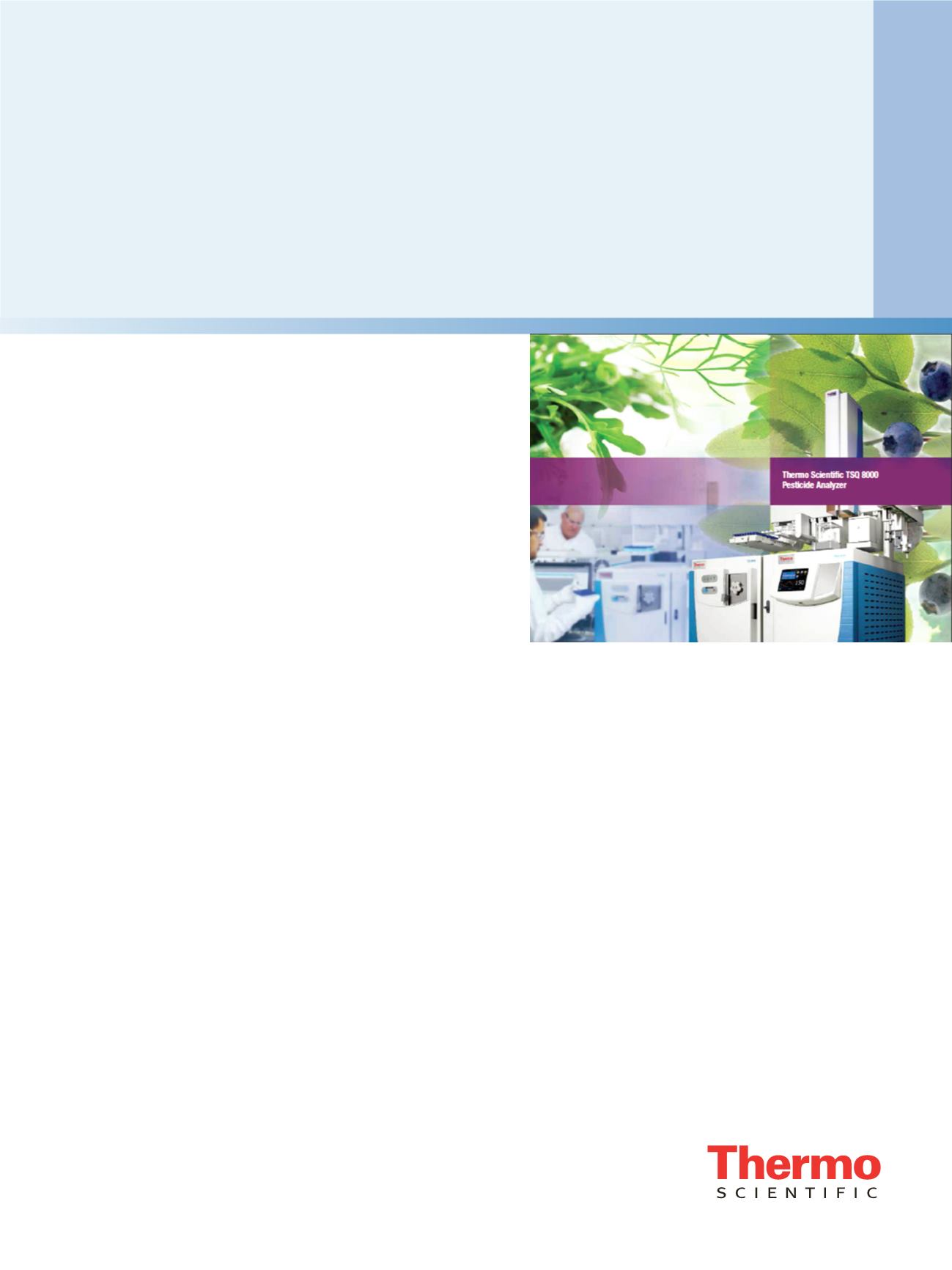

Simplifying Complex Multi-Residue
Pesticide Methodology in GC-MS/MS
David Steiniger, Juan Carmona, Stacy Crain, Paul Silcock, and Jason Cole
Thermo Fisher Scientific, Austin, TX, USA
Technical Note
10319
Key Words
Pesticide analysis, triple quadrupole GC/MS, AutoSRM, SRM, MRM
Overview
Easing Implementation of Multi-Residue
Pesticide Methodology
The task of setting up a triple quadrupole GC/MS
pesticide analysis can be daunting, regardless of your
starting point. Perhaps you are brand new to GC/MS
pesticide analysis, and you need all the help you can get.
Maybe you analyze a small set of pesticides and want to
expand your target list, or you analyze a large pesticide
set in multiple runs on a single quadrupole and want to
combine these into a single MRM analysis. Perhaps you
already have a comprehensive MRM method, but want
to move this to a Thermo Scientific
™
TSQ
™
8000 triple
quadrupole GC-MS/MS system to take advantage of its
robustness, removable ion source under vacuum, and its
ease in adding new target pesticides through AutoSRM.
Whatever your starting point, when adopting new
technology to address complex analytical challenges, you
need tools that enable you to be productive, quickly.
With your needs and requirements in mind, the Thermo
Scientific TSQ 8000 Pesticide Analyzer (Figure 1) has been
developed. Provided within this comprehensive package
are all the tools you need to set up a complex pesticide
method, regardless of your starting point.
Everyone who is new to pesticide analysis on the TSQ
8000 GC-MS/MS system will appreciate the provided list
of optimized pesticide transitions. Also, with an easy to
follow step-by-step description of how to develop new
transitions using AutoSRM, you’ll find the ease of adding
new pesticides to your MRM method is now a competi-
tive advantage for your laboratory. And for those who
need more assistance, the TSQ 8000 Pesticide Analyzer
contains a complete instrument method developed on an
included column with provided compound retention times
and MRM parameters—eliminating days, if not weeks,
of method development.
In addition to simplified method startup, another advantage
of using the analyzer is that it utilizes Timed-SRM
methodology, allowing for easy-to-use, high-analyte-capacity
methodology. The usability and scanning efficiency of
Timed-SRM are complemented by the fast-scanning
capability of the TSQ 8000 instrument, making the analysis
of hundreds of pesticides, with a total of over one thousand
transitions, not just possible, but easy.
Finally, the TSQ 8000 Pesticide Analyzer has the ability
to analyze full scan data at the same time as your targeted
MRM analysis. This allows you to harness the power
of existing EI full scan libraries to, for example, find potential
high-level contaminants you would otherwise miss in a
targeted analysis, or monitor the matrix background for
possible interference.
Figure 1. The TSQ 8000 Pesticide Analyzer. Details of its contents can be found in the
TSQ 8000 Pesticide Analyzer Brochure (BR10318)
.



















